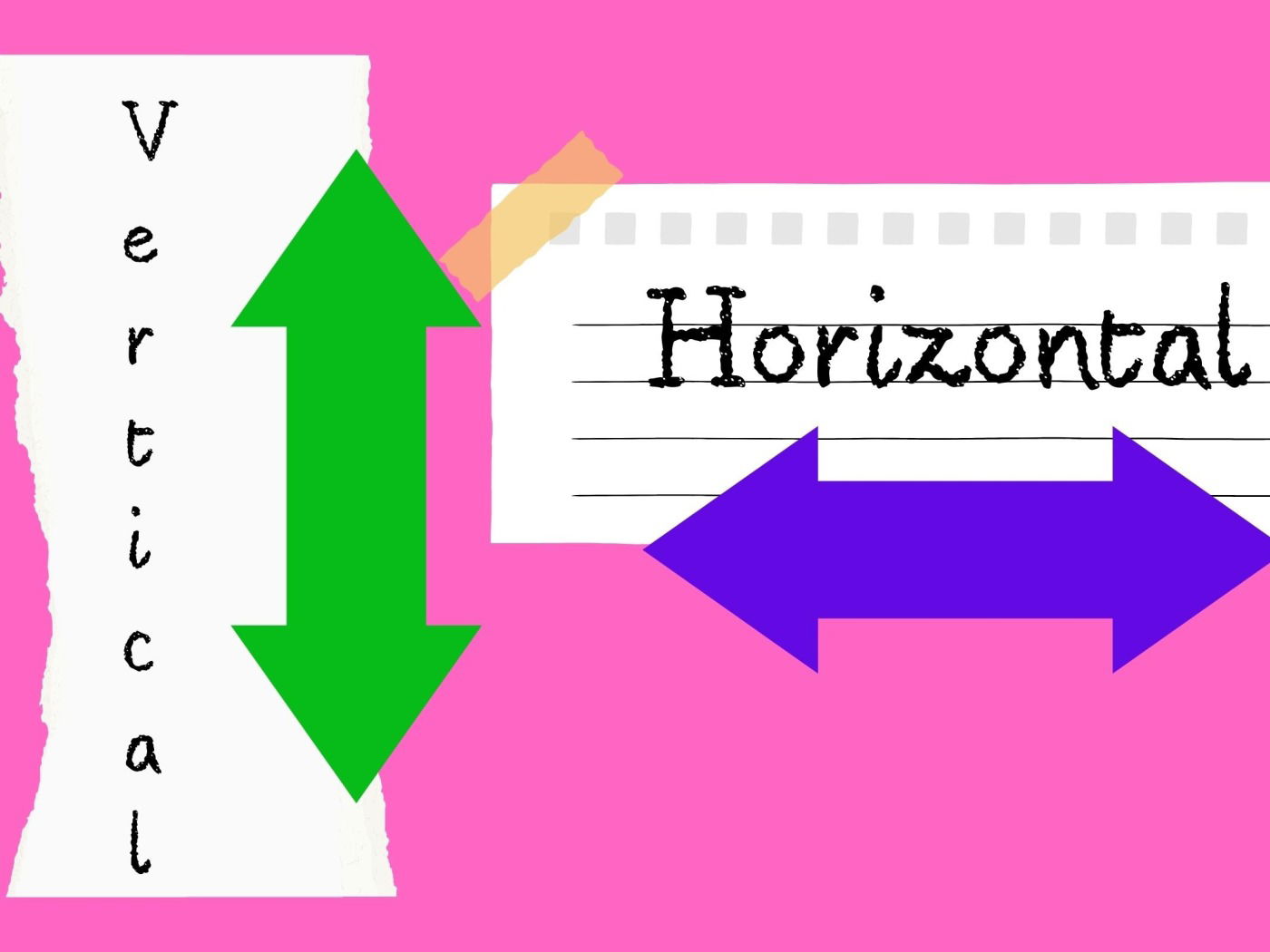Have you ever looked at a pair of scissors, or maybe a crosswalk, and noticed how lines intersect? Well, those intersecting lines are actually forming some pretty interesting shapes, and one of the most common is what we call a vertical angle. These angles pop up everywhere, from the buildings we live in to the bridges we cross, and understanding them helps us make sense of the geometry all around us, too.
Geometry might seem like something only for school, but it's actually a very practical subject. Knowing about different types of angles, like vertical angles, gives us a better grasp of how things are put together. For instance, architects, engineers, and surveyors often use angles to make sure structures are strong and safe, and that, is pretty important.
So, if you've ever wondered about the angles formed when lines cross, or how they relate to each other, you're in the right spot. We're going to explore what a vertical angle is, how they are formed, and why they are always equal to each other, you know, in a way that makes perfect sense.
Table of Contents
- What Are Vertical Angles?
- How Vertical Angles Are Formed
- The Vertical Angles Theorem: Always Equal
- Identifying Vertical Angles in Practice
- Real-World Applications of Vertical Angles
- Related Angle Concepts You Might Encounter
- Frequently Asked Questions About Vertical Angles
- Putting It All Together
What Are Vertical Angles?
A vertical angle is, quite simply, one of a pair of angles that are directly opposite each other when two lines cross. Imagine drawing two straight lines that cut through each other, like a giant "X." Each of the four angles created has a partner right across from it, and those partners are what we call vertical angles. They are formed by intersecting lines and are located opposite each other, basically.
The term "vertical" here doesn't mean "up and down" in the usual sense. Instead, it refers to the vertex, which is the point where the two lines meet. So, vertical angles share the same vertex but are on opposite sides of that point, you see.
To give you a clearer picture, if you have an angle named ∠efd, the angle that is a vertical angle with ∠efd is likely angle dfb, assuming it is the angle opposite to efd based on common configurations. Another way to put it, the vertical angle with angle efd is angle afb, therefore, the correct answer is option (d) in some contexts, it's almost like a mirror image across the intersection.
How Vertical Angles Are Formed
Vertical angles are formed when two lines intersect. It's really that straightforward. Think about any time two straight paths cross each other, or perhaps the blades of an open pair of scissors. The point where they meet is the intersection, and that's where these special angle pairs come to life, pretty much.
When two lines cross, they create four distinct angles around their meeting point. These four angles can be grouped into two pairs of vertical angles. Each pair consists of angles that are directly opposite one another, sharing only that central point where the lines cross, you know, just a little bit like corners in a room.
It's important to remember that for angles to be vertical, they must be formed by *two* straight lines. If the lines bend or curve, or if there are more than two lines intersecting at one point, then the standard definition of vertical angles might not apply, so you have to be careful there.
The Vertical Angles Theorem: Always Equal
One of the most remarkable things about vertical angles is a rule known as the Vertical Angles Theorem. This theorem states that two opposite vertical angles that are formed whenever two lines intersect are always equal to each other, or in other words, they have the exact same measure. This is a fundamental concept in Euclidean geometry, and it's very, very useful.
So, if you know the measure of one angle, say (2x + 11)°, and you need to find the measure of an angle that is vertical to the given angle, you already know the answer! It will also be (2x + 11)°. They are always congruent, meaning they are identical in size, you see, which simplifies things quite a bit.
This property is incredibly helpful in many geometry problems. If you have a diagram with intersecting lines and you're given the measure of just one angle, you can immediately figure out the measure of its vertical partner. This saves a lot of time and effort, naturally, and is a basic tool for solving more complex problems.
Identifying Vertical Angles in Practice
To determine which angle is a vertical angle with ∠efd, we first need to understand what vertical angles are, as we've discussed. It's all about looking for those opposite angles across the intersection point. Imagine the letter 'X' again; the top angle and the bottom angle are vertical, and the left angle and the right angle are also vertical, basically.
When you look at a diagram with intersecting lines, locate the point where the lines cross. Then, pick one angle. Its vertical angle will be the one directly across from it, sharing that same central point but on the opposite side. It's not the angle next to it, but the one "through" the intersection, you know, like looking straight across a street.
Let's say you have lines AB and CD intersecting at point E. If you consider angle AEC, its vertical angle would be angle BED. Similarly, angle AED would be vertical to angle BEC. It's a simple visual check once you get the hang of it, and it really helps how to find the vertical angles quickly.
Real-World Applications of Vertical Angles
The concept of vertical angles isn't just for textbooks; it has many practical uses in the world around us. Architects, engineers, and surveyors often use angles to ensure stability, precision, and proper alignment in their work. For instance, when designing a bridge, engineers might use vertical angles to calculate forces and ensure the structure can withstand various pressures, you know, for safety.
In construction, understanding how angles relate helps ensure walls are plumb and corners are square. A surveyor, for example, might use instruments that measure angles to map out land or establish property boundaries. The vertical angle represents the angle between the line of sight and the horizontal plane, which is crucial for determining elevation and distances, very, very important for accurate mapping.
Even in everyday objects, you can spot vertical angles. Think about the spokes on a bicycle wheel where they cross, or the framework of a truss bridge. These designs often rely on the inherent properties of angles, including vertical angles, to distribute weight and provide strength. So, this geometry is truly foundational, apparently, to how many things are built.
Another interesting application is in optics and light. When light rays cross, they form angles, and the principles of vertical angles can help explain how lenses work or how light reflects off surfaces. It's a fundamental concept that stretches across many different fields, you see, from the very small to the very large.
Related Angle Concepts You Might Encounter
While we're focusing on vertical angles, it's good to know they are part of a larger family of angle relationships. For example, angles that are next to each other and share a common side are called adjacent angles. If two adjacent angles form a straight line (180 degrees), they are called a linear pair, and that's a very common relationship, too.
Sometimes, you might encounter the term "zenith angle." This is different from a vertical angle. To convert a zenith angle of 101°33'40 to a vertical angle, we need to subtract it from 90 degrees. This shows that different types of angles have different definitions and relationships, and it's good to keep them separate in your mind, basically.
Understanding vertical angles is a stepping stone to more complex geometric concepts. It helps build a strong foundation for solving problems involving parallel lines, transversals, and even trigonometry. So, getting a good grasp on this concept now will certainly help you later, in some respects, with more advanced topics.
Frequently Asked Questions About Vertical Angles
Are vertical angles always equal?
Yes, absolutely! One of the key properties of vertical angles, as stated by the Vertical Angles Theorem, is that they are always equal to each other. If one vertical angle measures 70 degrees, its opposite vertical angle will also measure 70 degrees, you know, every single time.
How are vertical angles formed?
Vertical angles are formed when two straight lines intersect at a single point. This intersection creates four angles, and the pairs of angles that are directly opposite each other are the vertical angles, pretty much like an "X" shape.
What is the relationship between vertical angles?
The primary relationship between vertical angles is that they are congruent, meaning they have the same measure. They share a common vertex but are on opposite sides of the intersecting lines, so, they are essentially mirror images in terms of their size.
Putting It All Together
So, understanding what a vertical angle is really opens up a lot about the shapes and structures we see every day. They are simple yet powerful geometric concepts, formed when two lines cross, and always equal to each other. From the careful plans of an architect to the precise measurements of a surveyor, these angles play a very important part in making our world functional and safe, you know, in a quiet way.
Knowing about vertical angles is a fundamental step in appreciating the beauty and logic of geometry. It helps us solve problems, understand designs, and even look at everyday objects with a fresh perspective. If you're curious to learn more about other angle relationships, or perhaps want to explore how geometry helps solve real-world puzzles, there's always more to discover on our site, naturally.
Keep an eye out for these interesting angle pairs in your surroundings; you might be surprised just how often they appear! It's a simple concept, but it has a lot of reach, apparently, in how things are built and designed around us, even today, .
For further reading on angle properties in geometry, you might find this resource helpful: Math Is Fun - Vertical Angles.



Detail Author:
- Name : Jasmin Stamm I
- Username : little.hildegard
- Email : elliot72@gmail.com
- Birthdate : 1970-04-19
- Address : 41100 Ivory Pines Apt. 060 Turnertown, PA 96253-8641
- Phone : +1.346.715.0014
- Company : Conn-Hahn
- Job : Kindergarten Teacher
- Bio : Qui recusandae nihil quis perspiciatis. Sed illum et repellendus veniam nam aspernatur. Fugit reiciendis vel consectetur porro et. Blanditiis asperiores dicta nihil distinctio.
Socials
facebook:
- url : https://facebook.com/thirthe
- username : thirthe
- bio : Ipsum laborum quisquam nemo dolorum ratione tempora.
- followers : 5533
- following : 450
linkedin:
- url : https://linkedin.com/in/telly_dev
- username : telly_dev
- bio : Suscipit voluptas soluta dolor.
- followers : 889
- following : 2416
instagram:
- url : https://instagram.com/telly_xx
- username : telly_xx
- bio : Ut aliquam temporibus qui ullam minima optio. Minus dolores fugiat laudantium non non cumque.
- followers : 5809
- following : 1981
tiktok:
- url : https://tiktok.com/@hirthet
- username : hirthet
- bio : Sint et alias ipsam illum. Asperiores quis occaecati neque laudantium.
- followers : 946
- following : 2192
twitter:
- url : https://twitter.com/tellyhirthe
- username : tellyhirthe
- bio : Et veritatis voluptatum non nisi enim quia non. Delectus in aut quisquam nam laudantium sunt at. Mollitia repellat error exercitationem veritatis.
- followers : 3448
- following : 327

